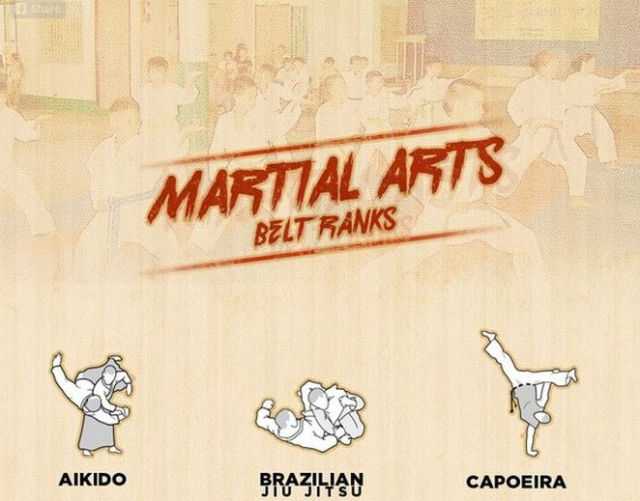The Background And Ideology Of Martial Arts: A Deep Dive
The Background And Ideology Of Martial Arts: A Deep Dive
Blog Article
Material Created By-Barber Barbour
Step into the old globe where martial arts were born out of necessity in diverse areas. Cultures crafted special combating designs linked with historic contexts. Methods progressed over centuries through dedicated technique and cultural exchanges. Today, modern-day martial arts blend typical aspects for optimal performance. Philosophically, martial arts emphasize self-control, self-improvement, and harmony. Regard, humility, and balance are foundational concepts assisting professionals in the direction of growth and strength. Check out the midsts of this rich background and ideology to reveal the extensive impacts shaping this enduring discipline.
Origins of Fighting Style
Fighting style originated in numerous regions worldwide, developing as practical fight systems to prevent dangers. These ancient battling styles were created out of necessity, with each society crafting methods matched to their distinct settings and obstacles. From the grappling arts of Jujutsu in Japan to the striking strategies of Martial art in China, martial arts were deeply linked with the historic, social, and cultural material of their corresponding societies.
In Japan, the samurai course polished martial arts like Kenjutsu, the art of the sword, which later developed right into the a lot more popularized kind of Kendo. At the same time, in Brazil, Capoeira emerged as a mix of dance and battle, developed by enslaved Africans as a means to resist injustice. Each fighting style carries with it an abundant history and ideology, reflecting the worths and beliefs of individuals that practiced them.
As you look into the beginnings of martial arts, you discover a tapestry of human ingenuity, strength, and the unrelenting spirit of warriors throughout time.
Development of Strategies
With centuries of method and refinement, battle strategies within different martial arts have undertaken an extensive evolution. From old styles like Martial art and Karate to extra modern self-controls such as Brazilian Jiu-Jitsu and Krav Maga, the development of methods has been driven by a combination of social impacts, useful applications, and technical innovations.
One considerable facet of this advancement is the cross-pollination of techniques between various martial arts. For martial arts beginners for adults , methods from conventional Japanese Jiu-Jitsu were integrated into the development of Judo by Jigoro Kano in the late 19th century. This blending of styles has actually led to the advancement of crossbreed martial arts like Mixed Martial Arts (MMA), which combine aspects of striking, grappling, and submission strategies.
Additionally, the advancement of techniques has actually been formed by the increasing emphasis on performance and performance in battle. Practitioners have continually looked for to improve their strategies with extensive training, trial and error, and competition, resulting in the growth of highly specialized and effective battling designs. In kajukenbo training , the evolution of methods in martial arts mirrors the vibrant nature of battle and the continuous mission for improvement and innovation.
Philosophical Foundations
Checking out the underlying philosophical principles of martial arts supplies understanding right into their core values and assisting ideas. At the heart of many martial arts self-controls is the principle of technique itself. By educating your mind and body to function as one natural system, you grow discipline that extends beyond the dojo or health club right into day-to-day life. This self-control includes respect, humility, and self-control, forming not just your physical capacities yet additionally your personality.
One more basic philosophical structure in martial arts is the concept of continual self-improvement. https://self-defense-knife-for-wo92478.slypage.com/31675975/a-comparative-analysis-of-martial-arts-and-self-defense-recognizing-the-essential-differences of understanding a fighting style is perpetual, with experts continuously aiming to far better themselves, both literally and mentally. This focus on development cultivates resilience, determination, and a development attitude that can be put on all aspects of life.
Furthermore, martial arts stress the value of harmony and equilibrium. Strategies are developed to utilize a challenger's power against them, highlighting the concept of yielding and rerouting pressure rather than meeting it head-on. This viewpoint encompasses interpersonal partnerships, advertising calm resolutions and good understanding. By embracing these thoughtful foundations, martial musicians not just improve their combat abilities however additionally grow a lifestyle fixated individual development, respect, and consistency.
Verdict
In conclusion, the history and ideology of martial arts offer a rich tapestry of tradition, technique, and self-improvement.
Take for example the story of Bruce Lee, who changed martial arts by blending various designs and approaches to develop his very own distinct kind of Jeet Kune Do.
Via dedication and advancement, martial artists remain to press borders and influence others to reach their full potential both in combat and in life.
